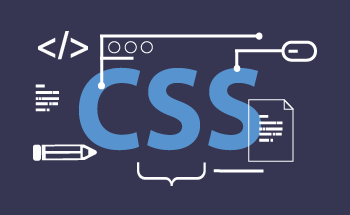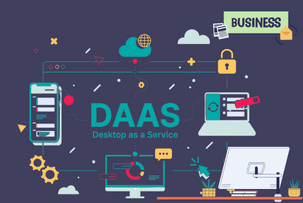Microservices Architecture: Features, Benefits, Real-World Examples
14:59, 20.02.2024
Cloud architecture appeared as a fundamental approach to software apps. At the same time, it introduced microservices in order to make the development process more productive.
The necessity of microservices is obvious, but there are so many cases where users see this word, but hardly understand its meaning. There are so many confusions that are connected with microservices so let’s discuss them in the article.
Here you will get all the needed information about microservice architecture (MA), real-life apps with MA, and some pluses/minuses of its usage.
Understanding Microservices
MA is an approach for app development where services are small-sized and independently deployed. In other words, this type of architecture unites services and orchestrates them in one framework.
The services are united with API that helps with interaction between the elements of the system. every service within the framework has independence and that drastically influences easiness of maintenance and development.
Microservices architecture is an ideal choice for those companies that are searching for higher scalability and agility. Microservices’ independence practically simplifies the update of every service without melding with the entire system of an app.
Defining the Concept of Microservices
The main concept of microservices is decomposition. This is a huge thing that should be done in order to determine the microservices’ structure. So, let’s dive into decomposition approaches a little bit more:
- Use case decomposition. In this specific case, Amazon can be used as an example. So, it applies particular microservices for the shipping orders.
- Business capabilities’ decomposition. Here every specific microservice is responsible for a particular part of business operation. For instance, Enterprise resource planning or ERP can be used for the automation of processes in HR, financial systems, procurement, manufacturing, and more.
- Resources’ decomposition. In this scenario, all the operations of certain fields are covered by microservices. When taking Spotify as an example, their microservice is applied for the management of user accounts. In such a way, it is possible to reach that level of personalization where the features are deeper.
Strategies for Ensuring Data Consistency
Microservices architecture is beneficial for resilience and scalability, however, data consistency can be a huge challenge in this system. To illuminate some risks, you should better understand how everything functions and have practical strategies.
So, every service within the framework has its own database. The synchronization of all the databases occurs during the operation.
To achieve strong consistency within a system, SAGA can be used. Sequence of Aggregated Actions function by splitting transactions into various smaller ones. They are isolated, so if in case one fails other transactions are compensating. There are 2 approaches orchestration and choreography. The first one has a central service that is responsible for the coordination of the operations and their order. In choreography, all the services decide on the actions independently.
One more great strategy is the usage of distributed locks. There might be some potential issues when several services have shared resources. To solve this trouble, you can use such systems as ZooKeeper or Redis. With the distributed locks, only one service can make some changes to the resource at a specific time.
Real-Life Applications Demonstrating Microservices Architecture
Walmart's
A good example of Microservices Architecture usage is Walmart. The architecture was implemented back in 2012 after constant issues during the peaks of customers’ activity. The workflow was imperfect, and due to the system issues, there was a noticeable revenue decrease.
After auditing of the existing system, the business decided to switch to microservices. With the help of this approach, it became possible to redistribute the tasks and in such a way simplify the workflow.
Here are some results after the transition:
- The usage of computer power decreased to 40 percent.
- Due to the switch of the architecture, the hardware spending lessened to min 20 and max 50 percent in some cases.
- It became possible to achieve full usage of mobile apps. So microservices increased the amount of conversion via another stream of purchasing.
- The downtime was avoided during Christmas sales, Black Friday, and other spicks in customer activity.
Spotify's Approach
One more business that has chosen microservices architecture is Spotify. According to recent statistics, there are more than 75 million active users and a complex monolithic system can bring more challenges than helping with the smooth functioning of the service.
To give the best possible experience to the customers, this business has managed to reach its goals by implementing the following:
- Every microservice has a certain goal. For instance, the analytics of users’ behaviors helps with playlist autogenerating.
- The entire system is divided into individual and self-contained microservices that are managed by separate development teams.
- Any probable issue is in a specific service so that it doesn’t influence the general workload.
- All the services are isolated and that’s why they are minimally dependent. Due to this fact, it became possible to achieve consistency in customer service.
Passport Scan
Microservices architecture is also used in PassportScan. This type of architecture created a structured workflow and as a result, users are getting a better experience with the service. The next elements were covered by microservices:
- Recognition of images
- Storage of sensitive information
- Components of payment
- Booking elements
- Management of user account
This approach towards the data structures greatly influenced all the processes and improved the safety level at all the stages. It also simplified the workflow so that there wouldn’t be any issues related to the sequence of actions.
Advantages and Challenges of Implementing Microservice Architecture
Here are some advantages of the Microservices architecture:
- The most beneficial thing about microservices is their size. Each microservice is relatively small and does only one thing. That greatly minimize the amount of needed code. So when someone new comes into a team it may less time to understand a small app than a huge extended system with lots of peculiarities.
- Microservice architecture is based on the principle of isolation so that it is possible to divide projects into several autonomous parts. Every separate part is responsible for deployment, developing, testing, and scaling a piece of an app. This makes the results and progress much quicker.
- With such a working environment, the entire process becomes faster and more productive. Minimized scope helps with lessening the number of bugs and that is also a time-saving approach.
- Isolated approach of the microservices architecture also simplifies the process of fixing emerging issues. For instance, in case of a memory leak, the standard consequence is to stop the functioning of the whole system. With the choice of microservice architecture, this problem will be only in one service so others won’t be affected.
- Continuous delivery of an app is one more benefit that should be mentioned. The app is divided into several parts – it becomes way simpler to change some components without influencing an entire workflow. So, the application is constantly working and at the same time evolves.
- Flexibility of tech stack. A great thing is that every microservice has its own tech stack and it has no influence on the other parts. That is a perfect environment for innovation and experimenting of the team.
- Except for deployment and maintenance, the microservice architecture makes testing so much easier. A shorter time frame is needed to finish the testing sequence. That in the long run, also influences the whole cycle of development.
- Because all the elements are self-contained, it is so easy to maintain the app. There is no element dependency that will immediately influence the system.
- And of course, let’s not forget how simple the deployment process is with microservices architecture. All the services are individually deployed, and as in all the other processes, emerging problems won’t influence the system in general.
Challenges Associated with Microservices
All types of architecture have some challenges, microservices also have a couple of things that we can share:
- As we have already discussed microservices are small and there can be lots of them so it creates a difficult distributed system of connections. That’s why deployment becomes so much harder. Operational complexity is increased because of the numerous moving parts within the system. Developers have much more work that is connected with the cooperation of numerous services.
- The testing of various interactions between services becomes much harder. It becomes not only more challenging but also time-consuming, because of the complex system structure.
- Developers need more time for implementation of the interaction mechanisms for dealing with some possible issues.
- Communication within the team should be transparent in order to implement multi-service requests. Every team member must be fully present and understand the processes deeply, otherwise, it will be difficult to get a perfect workflow.
Conclusion
Microservice architecture slowly becomes a more popular way of building apps. Lots of businesses from various markets accept it as a perfect choice for their industry. We have already discussed the examples of such companies as Walmart, Spotify, and Passport Scan.
This method is considered to be cheaper and more flexible for the app’s development. Moreover, it can gradually evolve and grow together with the growth of business needs. The major benefits that stand out microservice architecture from other options are isolation, higher productivity level, simplicity of testing, and deployment.


